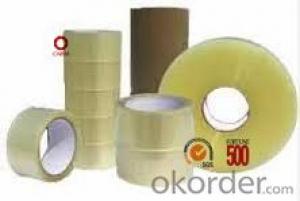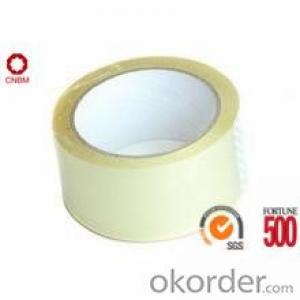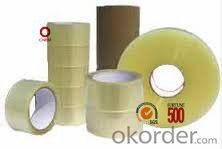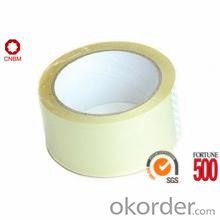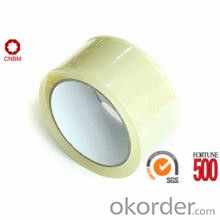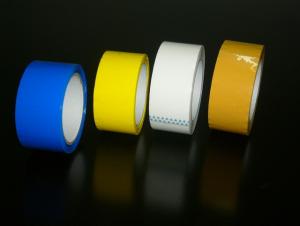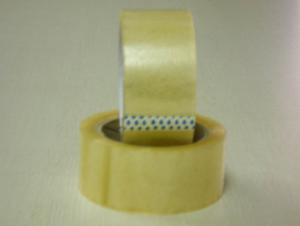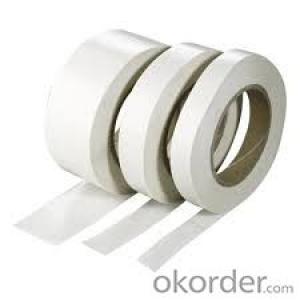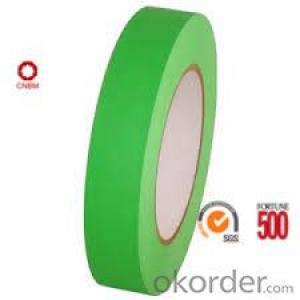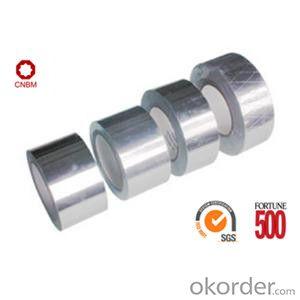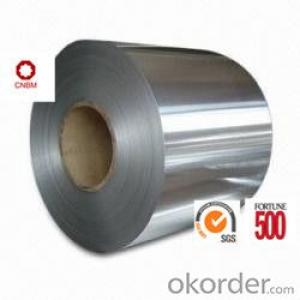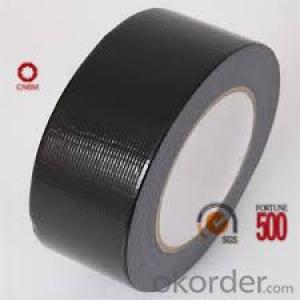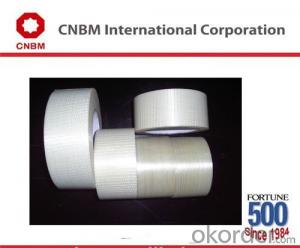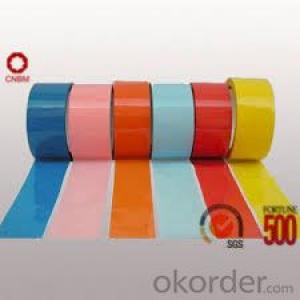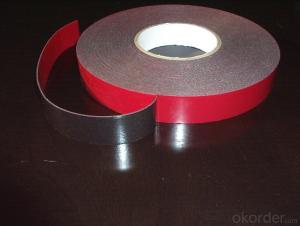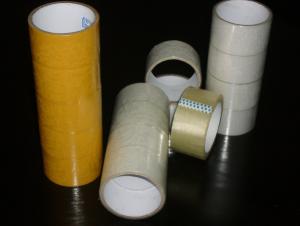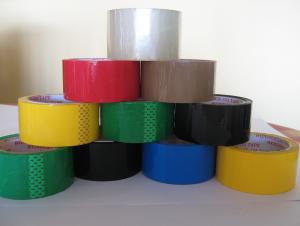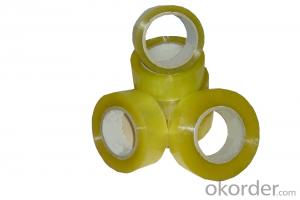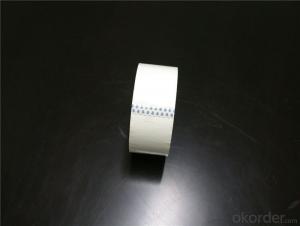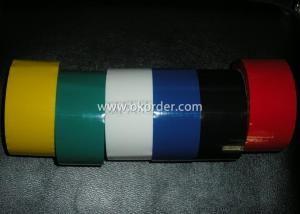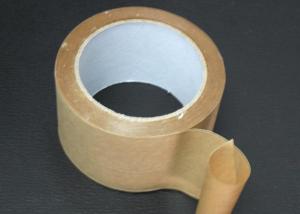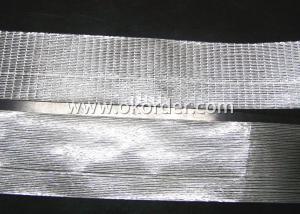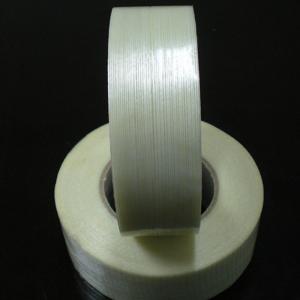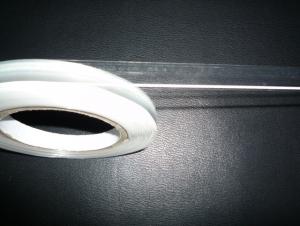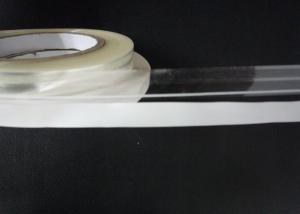3M Scotch Shipping Packaging Tape - Low Noise Chinese Famous Brand BOPP Tape
- Loading Port:
- Shanghai
- Payment Terms:
- TT OR LC
- Min Order Qty:
- 10000 m²
- Supply Capability:
- 20000000 m²/month
OKorder Service Pledge
OKorder Financial Service
You Might Also Like
Specifications
·World Top 500 Enterprises
·Resistance to cold, heat and aging
·Best quality and competitive price
·SGS&ISO9001
Description
The Bopp Tape is of Bopp film as the carrier, coating with water based acrylic adhesive. It is excellent in flame retardant, high temperature stability, and anti-aging. It provides well insulation to various products.
General purpose of Bopp Tape: widely used for carton sealing and packaging, light duty packaging, bounding, holding and other office and household use.
Typical Physical Reports of Bopp Tape

The thickness of the tape can be customized.
Cut Roll: As per customer’s requirements
Log Roll: Width1280mm; length according to customers’ requirements
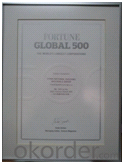
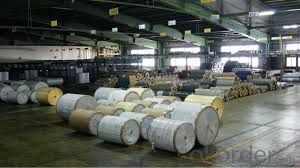
FAQ of Double Sided Tissue Tape
Q1. How about your company?
CNBM International Corporation (CNBM International) is a state-owned company and we have sound business relations with clients from over 120 countries. Currently, we have wholly-owned overseas subsidiaries and branches in 5 countries with a view to realize localization, which also represents an essential progress in our globalization target. We have over twenty years experiences.
Q2. What kind of service we can provide for you?
Sample of BOPP Tape is available.
Your inquiry will be replied within 12 hours.
24 hours service for you
Well-trained & experienced sales representative are ready to answer you.
Q3. How long can you receive the product?
Within 7-15 working days after receiving your deposit
Welcome to contact us and visit the factory!
- Q: Does packaging tape come in different materials for specific applications?
- Yes, packaging tape does come in different materials for specific applications. These materials include polypropylene, PVC, paper, and filament tape. Each material has unique properties that make it suitable for various purposes such as sealing lightweight packages, securing heavy boxes, or providing extra strength and tear resistance.
- Q: Does packaging tape come in different odor-free options?
- Yes, packaging tape does come in different odor-free options. Many manufacturers offer packaging tape that is specifically designed to be odor-free, making it suitable for use in sensitive environments or for individuals who may have allergies or sensitivities to certain scents. These odor-free options are typically made from materials that do not emit any strong smells or fragrances, ensuring a neutral and pleasant packaging experience. When purchasing packaging tape, it is always a good idea to check the product description or labeling to see if it is specifically mentioned as odor-free.
- Q: What are the considerations for using packaging tape on corrugated cardboard boxes?
- When using packaging tape on corrugated cardboard boxes, it is important to consider the strength and durability of the tape, as well as its adhesive properties. The tape should be strong enough to securely seal the box and withstand any potential stress or weight during handling and transportation. Additionally, the tape's adhesive should be able to adhere well to the corrugated surface and provide a tight seal, preventing any contents from shifting or falling out. It is also advisable to choose a tape that is easy to apply and tear, ensuring efficient packaging processes.
- Q: Can packaging tape be used for sealing plastic storage jars?
- Indeed, packaging tape proves to be a versatile tool for sealing plastic storage jars. Crafted to offer a robust and dependable seal, packaging tape is apt for diverse applications, including the sealing of plastic storage jars. By utilizing it, one can effectively safeguard the contents of the jar, ensuring no leaks or contamination occur. Nevertheless, it is important to acknowledge the existence of alternative options specifically tailored for jar sealing, such as jar lids and seals. These alternatives may offer an even more secure and hermetic seal.
- Q: What are the considerations for using packaging tape on textured surfaces?
- There are several factors to consider when using packaging tape on textured surfaces. To begin with, the texture of the surface can impact how well the tape sticks. Textured surfaces often have uneven or rough areas that can make it challenging for the tape to securely adhere. It is crucial to select packaging tape that is specifically designed for textured surfaces. These tapes have a stronger adhesive that can better stick to uneven surfaces, ensuring that the tape remains in place. Another factor to think about is the tape's durability. Textured surfaces can be more abrasive than smooth surfaces, causing the tape to wear out more quickly. It is important to choose packaging tape made from a durable material, such as reinforced or heavy-duty tape. These types of tape are designed to withstand more wear and tear, providing a longer-lasting bond on textured surfaces. Furthermore, the texture of the surface can affect the appearance of the tape. As textured surfaces are not smooth, the tape may not lay flat and can create air pockets or wrinkles. This can give the package a messy or unprofessional look. To improve the appearance, it may be necessary to use extra tape or apply it in a way that smooths out any unevenness. Lastly, the removal of the tape from textured surfaces should be considered. Textured surfaces can make it more challenging to cleanly remove the tape without leaving behind any residue. To avoid damaging the surface or leaving sticky residue, it is recommended to test the tape on a small, inconspicuous area before fully applying it. If residue does occur, adhesive removers are available to safely remove any remaining residue. In conclusion, when using packaging tape on textured surfaces, it is important to choose tape specifically designed for uneven surfaces, select a durable tape that can withstand the texture, consider the appearance of the tape on the textured surface, and be cautious of any potential residue left behind when removing the tape.
- Q: How does packaging tape perform in high-temperature conditions?
- Packaging tape typically performs well in high-temperature conditions as it is designed to withstand heat. The adhesive used in packaging tape is usually heat-resistant, ensuring that the tape remains securely bonded even at elevated temperatures. However, it is important to note that the performance may vary depending on the specific type and quality of packaging tape used.
- Q: What is the difference between acrylic and hot melt packaging tape?
- Sealing boxes and packages commonly involve the use of acrylic and hot melt packaging tapes, but they differ significantly in their adhesive properties and performance. Acrylic packaging tape boasts clarity and transparency, making it perfect for situations where package appearance matters. It also resists yellowing and aging, ensuring that it remains clear and does not become brittle over time. With a strong initial tack, acrylic tape adheres quickly to surfaces upon application. However, it may not perform as well in extreme temperatures, as its adhesive strength can diminish when exposed to high heat or cold conditions. In contrast, hot melt packaging tape consists of a synthetic rubber adhesive that is applied as a hot liquid. This tape offers superior adhesion and bond strength, making it suitable for heavy-duty or challenging packaging tasks. It excels in temperature resistance, maintaining its adhesive properties even in extreme conditions. Additionally, hot melt tape is known for its quick and effortless release, making it convenient for high-volume packaging operations. In conclusion, acrylic and hot melt packaging tapes are both effective for sealing boxes, but they have distinct advantages and disadvantages. Acrylic tape is ideal for situations prioritizing clarity, aging resistance, and initial tack. On the other hand, hot melt tape excels in adhesion strength, temperature resistance, and ease of use. Ultimately, the choice between the two depends on the specific requirements and conditions of the packaging task at hand.
- Q: How does packaging tape differ from masking tape?
- Packaging tape and masking tape are distinct types of tapes serving different purposes and possessing unique traits. Specifically intended for sealing and securing packages or boxes, packaging tape finds common use in the shipping and packaging industries. It is typically constructed from robust and long-lasting materials like polypropylene or PVC, ensuring exceptional adhesion and resistance against tearing or splitting. Its notable high tensile strength guarantees the package remains securely sealed during transit or storage. Moreover, packaging tape generally boasts a potent adhesive that adheres well to various surfaces, including cardboard, plastics, and metals. It is available in different widths and lengths to accommodate diverse packaging requirements. In contrast, masking tape primarily finds application in painting and DIY projects. Composed of a thinner and less resilient material, such as crepe paper, it possesses a less aggressive adhesive in comparison to packaging tape. The primary objective of masking tape is to establish clean, straight lines and safeguard surfaces from paint or other liquids during painting tasks. Masking tape can be effortlessly applied and removed without leaving any residue or causing damage to the surface. Furthermore, it is recognized for its ability to conform to uneven surfaces, enabling precise masking and detailing work. To summarize, packaging tape is designed for secure sealing and packaging of boxes and packages, whereas masking tape is primarily utilized for painting and surface protection. Packaging tape is stronger, more durable, and possesses a more potent adhesive, whereas masking tape is thinner, more flexible, and can be effortlessly removed without leaving any residue.
- Q: What are the common price ranges for packaging tape?
- The common price ranges for packaging tape vary depending on the type, brand, and quantity of tape being purchased. On average, basic packaging tape can range from $2 to $10 per roll, with lower quality or smaller rolls being on the lower end of the price range. Mid-range packaging tapes, which may offer better durability or adhesive strength, can cost between $5 and $20 per roll. Premium or heavy-duty packaging tapes, often used for industrial or professional purposes, can range from $10 to $30 per roll. Bulk packaging tape options, such as packs of multiple rolls, are also available and may offer slightly discounted prices. It is important to consider the specific requirements of your packaging needs and compare prices from different suppliers to find the best deal.
- Q: Are there any safety precautions to consider when using packaging tape?
- Yes, there are a few safety precautions to consider when using packaging tape. First, always use caution when handling the tape dispenser to avoid accidental cuts or injuries. Ensure that the area where you are using the tape is clear of any obstacles or potential tripping hazards. It is also important to store the tape in a safe place, away from heat sources or direct sunlight, as excessive heat can cause the tape to lose its adhesive properties. Lastly, be mindful of the weight and size of the package you are sealing, as using insufficient tape can cause the package to come apart during transportation.
Send your message to us
3M Scotch Shipping Packaging Tape - Low Noise Chinese Famous Brand BOPP Tape
- Loading Port:
- Shanghai
- Payment Terms:
- TT OR LC
- Min Order Qty:
- 10000 m²
- Supply Capability:
- 20000000 m²/month
OKorder Service Pledge
OKorder Financial Service
Similar products
Hot products
Hot Searches
Related keywords
